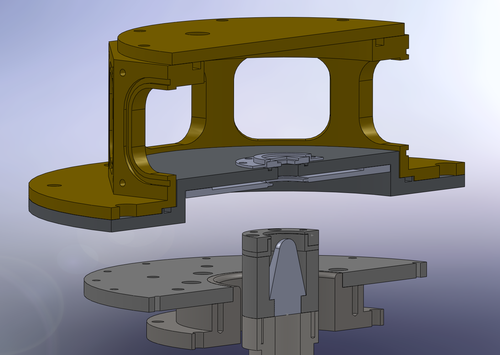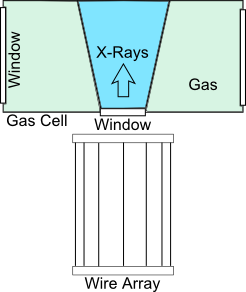At the energies necessary for fusion to take place, matter is usually in the plasma state – negatively charged electrons have been stripped from neutral atoms, leaving positively charged ions. But how do we get to that state? What process actually strips the electrons from the atoms?
One common process is electron impact ionisation. An electron is accelerated by an electric field (think two parallel plates, with a potential difference or voltage between them). The electron gains energy as it speeds up and eventually collides with an atom. The electron loses energy to the atom. If it loses enough energy, another electron will be stripped from the atom. Now there are two electrons. They both accelerate and the process cascades – now there is a plasma!
Another process is photo-ionisation. In this case, it is a photon of light that provides the energy to ionise an atom, not an electron. The photon has to have sufficient energy to kick the electron out, so usually short wavelengths of light such as x-rays are required.
I’m designing an experiment to study this process at the moment. We know that an imploding cylindrical array of thin metal wires produces an intense burst of x-rays. I’m going to place a small chamber full of gas above the imploding array, and the x-rays will enter through a window in the base of the chamber.

This CAD drawing is a bit complicated, and I’ve cut it in half to show the insides clearly. The empty space in the centre will have 16 wires (not shown) running vertically, in a cylinder. When MAGPIE discharges its current, the wires will ionise and implode. When the plasma from these wires reaches the centre and forms a column, the energy in the plasma is converted into x-ray light. Some of that light will go upwards through the little square window (light gray, above the dark gray base of the chamber) and into the gas confined inside the octagonal brass chamber. Those rounded square holes will have glass over them to prevent the gas getting out. Here’s a simpler diagram:

From the sides of the chamber, we should be able to see what happens to the gas. We might expect significant photo-ionisation from the intense x-ray radiation. If we do get a lot of photo-ionisation, then maybe a z-pinch is a good way of creating the sort of hot plasma that could then be compressed until hot and dense enough for fusion to occur. Lasers are usually used to create this initial plasma state, but lasers are inefficient and suffer from all sorts of side effects to do with self focusing that leads to non-uniform ionisation of the gas, so a z-pinch might be more attractive.